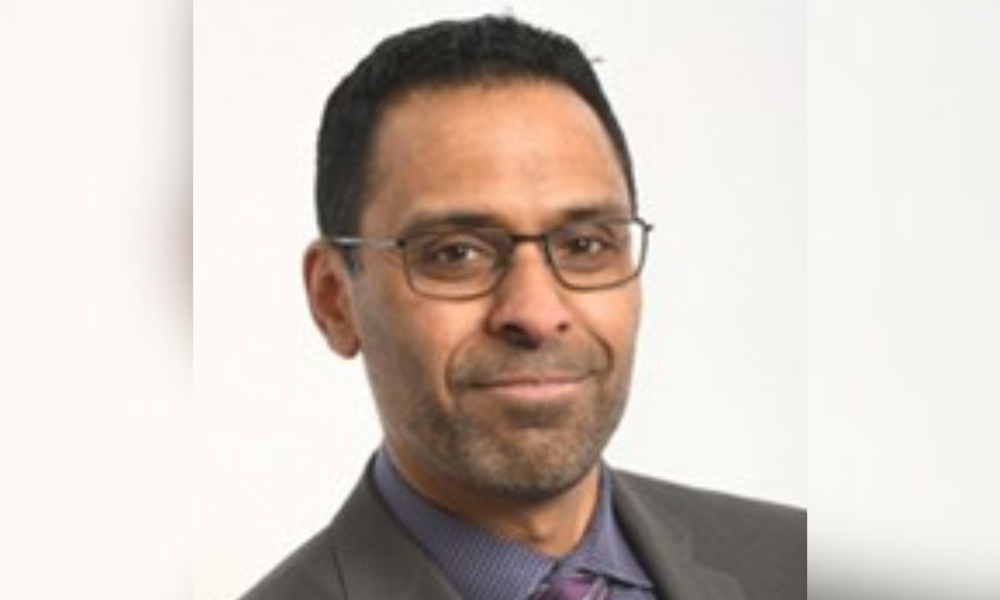CAAT reports strong financial performance in 2024, posting an annual net rate of return of 15.2 per cent

Results from CAAT Pension Plan’s financial performance report has found the Plan delivered on robust growth, solid funding, and strategic evolution.
On Tuesday, the Plan posted a 15.2 per cent return net of fees in 2024, while its funded status reached 124 per cent, backed by $6 billion in funding reserves, which can serve as a cushion against market and demographic volatility.
For CAAT’s chief investment officer Asif Haque and chief pension officer Evan Howard, it’s not just a matter of smart bets. It’s long-term thinking and operational discipline that make the difference.
“The whole talk right now, given the economic environment and the geopolitical environment that we're in, is about resilience. And the CAAT Pension Plan is resilient,” said Haque. “There's 6 billion of reserves to help us weather the storm that we're in right now or potential storms in the future.”
That resilience didn’t come from short-term market moves as Haque underscored CAAT’s 10-year net return of 9.6 per cent can be attributed to the Plan’s steady investment strategy and a commitment to active management.
“Our active management program was quite successful. We've outperformed our policy benchmark by over one and a half percent per year over those last 10 years,” noted Haque, also adding that the plan’s success is deeply rooted in long-range positioning, pointing to strong performance in public and private equity, as well as real estate and infrastructure as dominant assets.
Howard agrees that while annual results like 2024’s are important, it’s the structural safeguards behind CAAT’s growth, particularly CAAT’s membership in the Plan, which grew by over 17.5 per cent.
“Certainly, the demand for defined benefit pensions or lifetime pensions continues to be very strong,” he said.
Haque is quick to acknowledge that 2024 was a good year across the board for the Plan, particularly in public equities, which managed over 20 per cent return. Meanwhile, the Plan’s private equity portfolio delivered 16 per cent and commodities delivered 10 per cent as well. Haque also underscored that credit allocation, relatively new to the Plan, managed over 11 per cent return.
But both leaders emphasize that the results aren't driven by flashy reallocations or tactical moves. Instead, CAAT focuses on multi-year adjustments to maintain alignment with long-term liabilities. After a recent asset-liability study, noted Haque, CAAT began shifting more weight toward real assets, targeting a 25 per cent allocation.
He explained that CAAT’s interest in real assets is grounded in their stability and long-term value. Haque emphasized that private assets, particularly in real estate and infrastructure, allow for a more patient, deliberate investment approach.
“It’s the combination of private assets where value is recognized over the long term, and our owners and operators can have a long-term view and not shift intact based on the winds of the market at any given moment,” he said.
These assets also offer a key financial advantage around built-in inflation protection. According to Haque, that feature is especially critical given recent and anticipated economic volatility.
“We really are looking for contractual inflation protection when we go into those sorts of assets,” he said, adding that such protection is “very beneficial from the investment side and for the overall health of the plan.”
Asked about expansion within real assets, Haque noted CAAT’s growing network of external partners, utilizing a combination of both fund investments and co-investments.
That collaborative approach also extends to private equity. While Ontario Teachers’ is re-evaluating direct ownership in favour of strategic partnerships, CAAT is sticking with a model it has maintained for 15 years.
“Across our portfolio, we’ve had the model of working with external partnerships—public markets, private equity, real assets—supplemented on the private side with co-investments,” Haque said. “We've had that sort of external partnership model in our portfolio for a long time now. The results have been positive and we're quite happy with that model.”
Of course, no pension plan is immune from risk, and CAAT isn’t complacent. Trade disputes, particularly around US-China tensions, are creating headaches across capital markets. And while Haque acknowledged the gravity of these macro factors, he plans to stay the course.
“Yes, we’re concerned about what’s happening with tariffs and its impact on markets,” he said. “But our focus really is looking out to the long term, building a portfolio of assets that will enhance plan health over the very long term.”
While not pointing to specific tariff-related opportunities, Haque stressed the importance of staying vigilant.
“When there's a little bit of economic turmoil, there will be pockets of opportunity that arise in various areas,” he said. “We're always scanning the market for ideas.”



